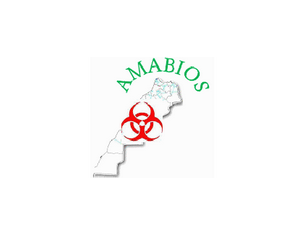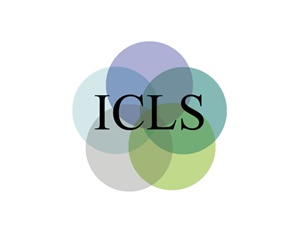 Susan A. Ehrlich is a retired judge of the Arizona Court of Appeals. A graduate of Wellesley College, she holds a J.D. and an LL.M. (biotechnology and genomics) from Arizona State University College of Law. Among her activities, she serves as a member of the National Science Advisory Board for Biosecurity and as an adjunct professor in the Department of Microbiology and Immunology, University of Texas Medical Branch – Galveston.
Susan A. Ehrlich is a retired judge of the Arizona Court of Appeals. A graduate of Wellesley College, she holds a J.D. and an LL.M. (biotechnology and genomics) from Arizona State University College of Law. Among her activities, she serves as a member of the National Science Advisory Board for Biosecurity and as an adjunct professor in the Department of Microbiology and Immunology, University of Texas Medical Branch – Galveston.
The views expressed are hers alone.
Many a trumpet has been sounded to organize the plethora of federal statutes, regulations and rules that govern life-sciences research to no real avail. This lack of response harms the United States’ scientific progress, burdening and discouraging researchers with unnecessary expenditures of time and money in order to comply with policies that too often are unnecessary, duplicative or conflicting. What is needed is the establishment of a presidential commission charged with collecting, reviewing and synthesizing this administrative glut into a single, comprehensive framework for the oversight of life-sciences research.
The National Science Advisory Board for Biosecurity (NSABB) appealed for regulatory coordination in the context of the Biological Select Agents and Toxins (BSAT) in its 2007 report Proposed Framework for the Oversight of Dual Use Life Sciences Research: Strategies for Minimizing the Potential Misuse of Research Information. Four years later, the NSABB did so again in another report, Guidance for Enhancing Personnel Reliability and Strengthening the Culture of Responsibility. Although both reports were well-received, these particular appeals have been ignored.
President Obama in July 2010 issued Executive Order 13546, “Optimizing the Security of Biological Select Agents and Toxins in the United States,” one purpose of which was “[t]o ensure that the policies and practices used to secure BSAT are harmonized and that the related oversight activities of the Federal Government are coordinated.” That order established a Federal Experts Security Advisory Panel (FESAP) consisting of representatives from the appropriate federal departments and agencies. While successful in several respects, the FESAP has not proposed a means by which governance of the BSAT can be harmonized.
The NSABB is an independent federal advisory board whose voting membership does not include any representative of a federal department or agency although it does have ex officio members from federal departments and agencies. The FESAP is comprised entirely of representatives from federal departments and agencies. Neither body is the fitting one to address the mission of identifying the relevant statutes, regulations, rules and policies.
The NSABB’s calls came from its members’ appreciation in framing an oversight strategy and in outlining a personnel-reliability guidance of the immense number of laws and regulations applicable to BSAT research, too many of which are redundant, a significant number of which are unnecessary and some of which are even contradictory. However, it neither was nor is in the NSABB’s charters to address the issue of refining the regulatory systems even as they pertain to the BSAT.
The FESAP, charged with harmonizing and coordinating the BSAT “policies and practices,” by the nature of its membership of representatives only from federal departments and agencies is well-suited to identify the pertinent laws and guidelines. For the same reason, however, it is unlikely to be able to rid the departments and agencies of those same “policies and practices” as each sector defends its own procedures. In addition, the FESAP, like the NSABB, is limited to an examination of the governance of the BSAT.
What is needed is an independent expert advisory committee established by Executive Order, one whose members are not federal representatives but with ex officio delegates from each of the interested federal departments and agencies. This committee would be separately staffed by individuals from varying areas of expertise who would be able and expected to draw on the knowledge of each of those departments and agencies. The charge would be to gather all of the relevant federal statutes, regulations, rules and guidelines first with reference only to the BSAT and subsequently to all of the life sciences and then, in the same order, i.e., first the BSAT and next all of the life sciences, to distill the law and policies into a single, comprehensive and coherent proposed compilation of regulations to govern research. Unnecessary regulation would be marked for elimination; necessary regulation would be identified and retained as streamlined and returned to first principles. To maintain a harmonized approach, the interests of each department and agency would be reflected only insofar as necessary to achieve the unique objectives of that department or agency.
There arguably already are too many boards, commissions and committees advising the executive branch of the government. Nonetheless, there is no practical alternative means by which to convene experts from outside the government to provide counsel independent of the federal departments and agencies, and the advice must be free of those parochial interests.
It would be a daunting task. It would take an enormous commitment of interest and time on the part of the members and staff, and it would be a costly endeavor. In the end, though, it would take less time and money than would have been wasted in the same period by compliance with the jumble that passes for the regulatory structure now in place. This country can afford to do no less if it is to maintain its role as a leader in scientific research and as a nation whose scientists are bursting with ideas to further public health and safety and, in that course, to expand the country’s commerce and promote its security.




























